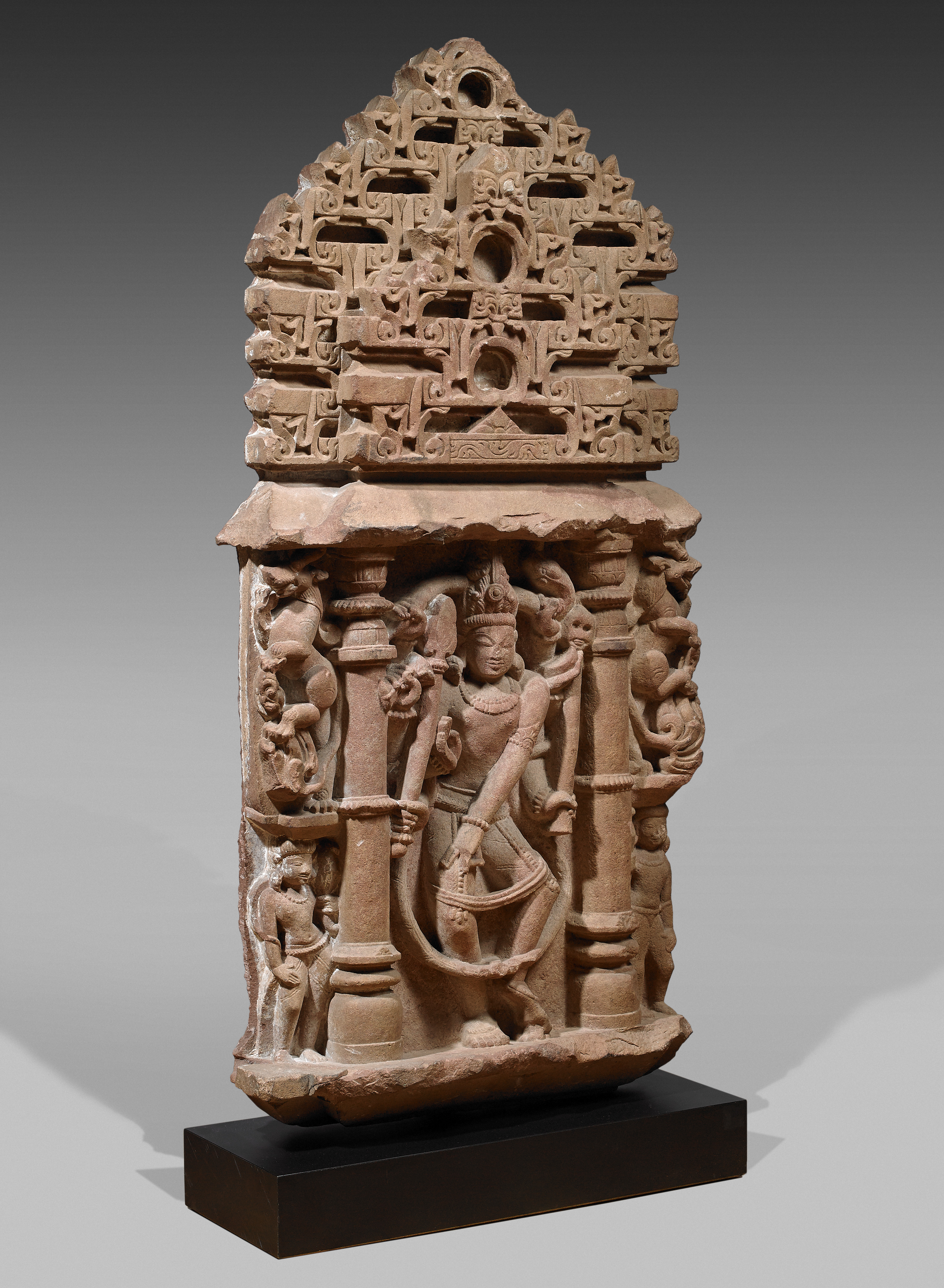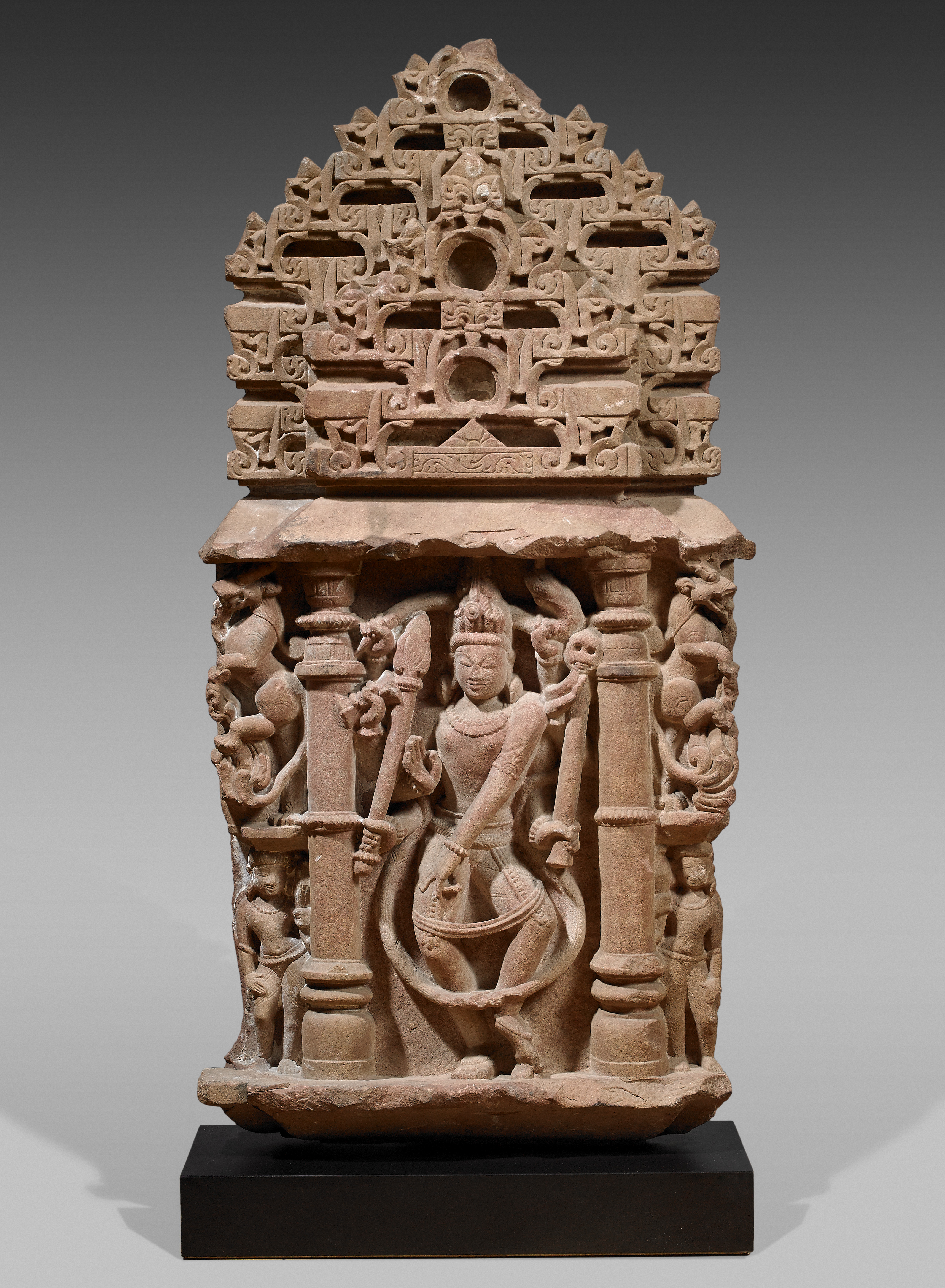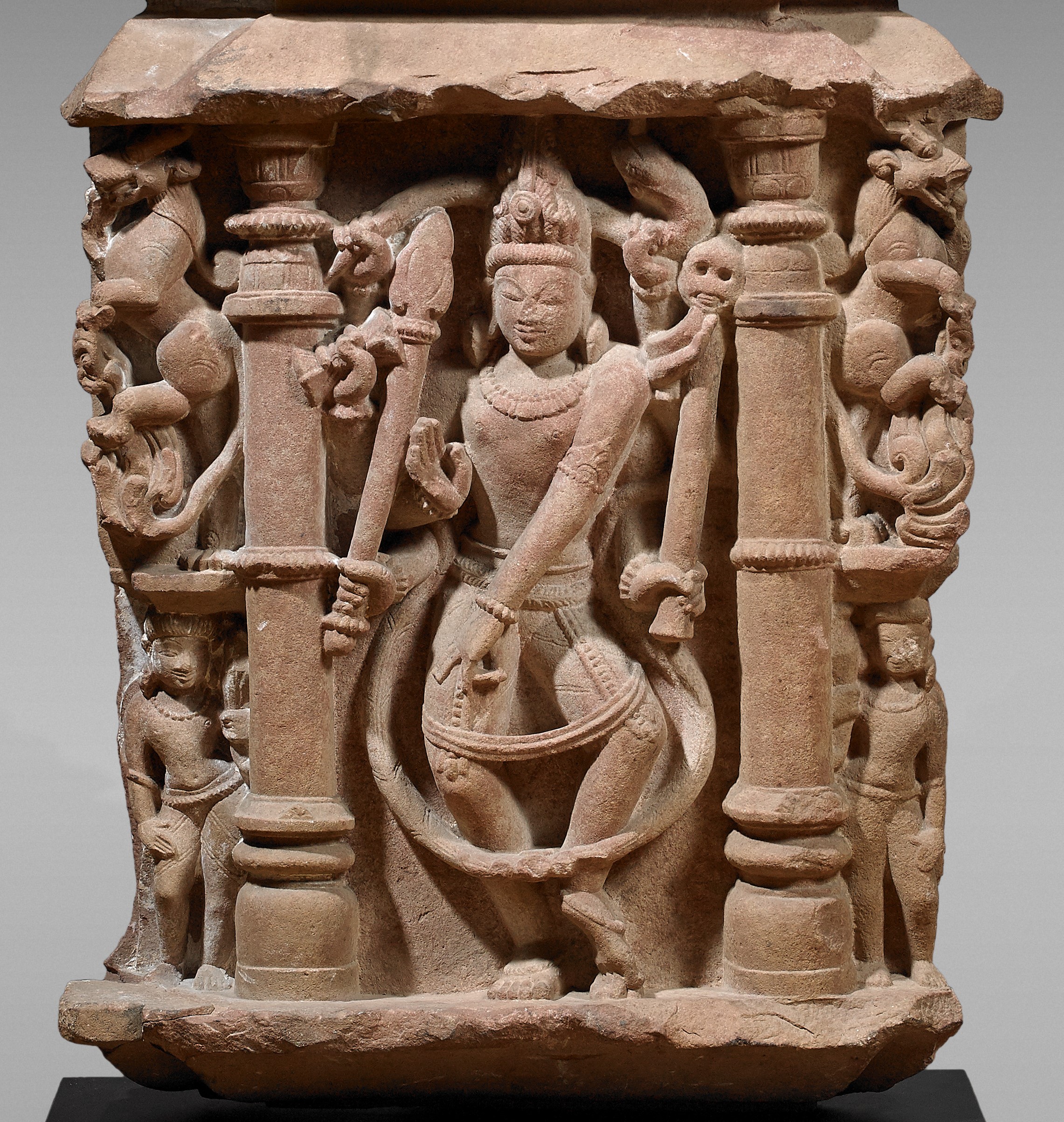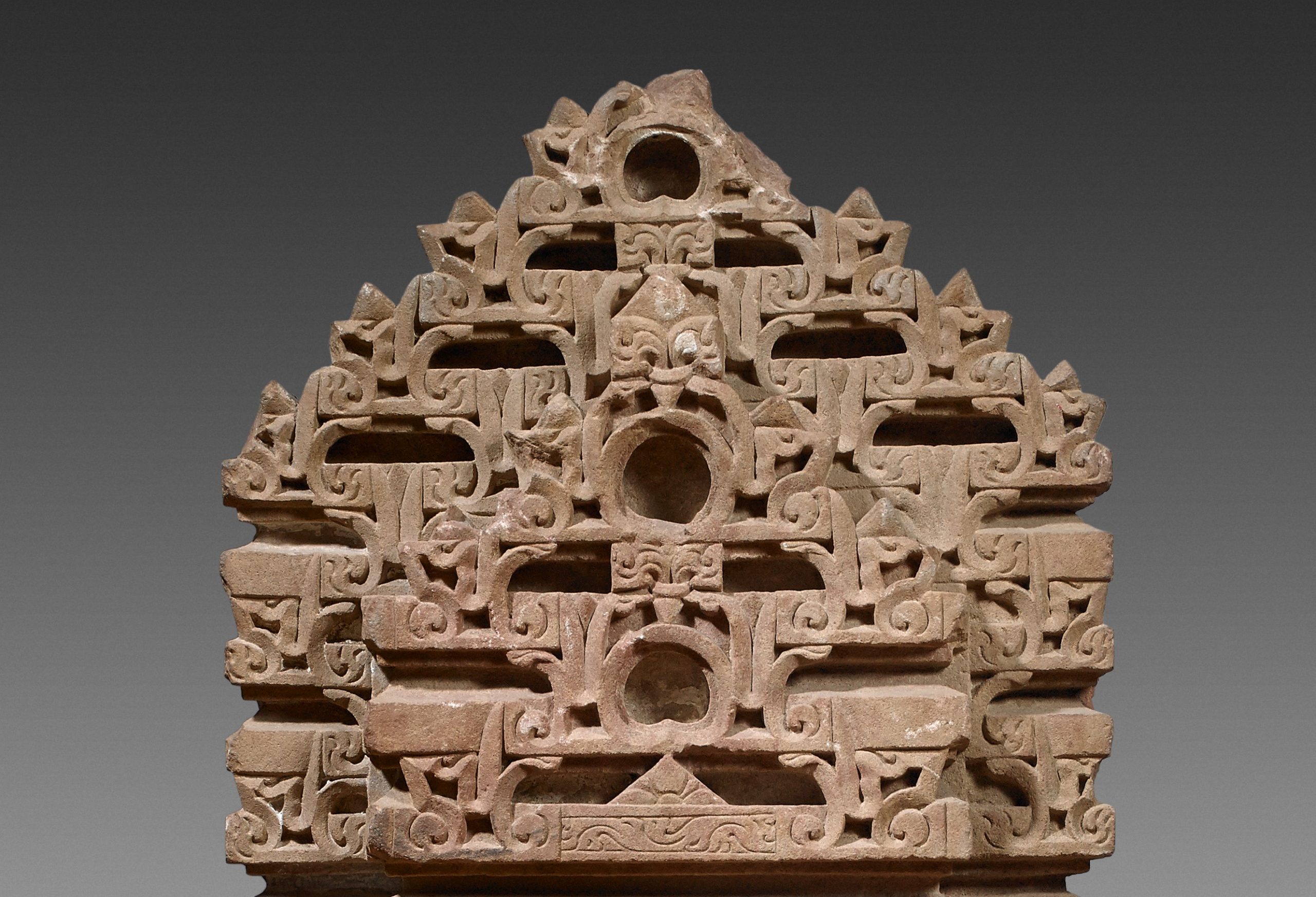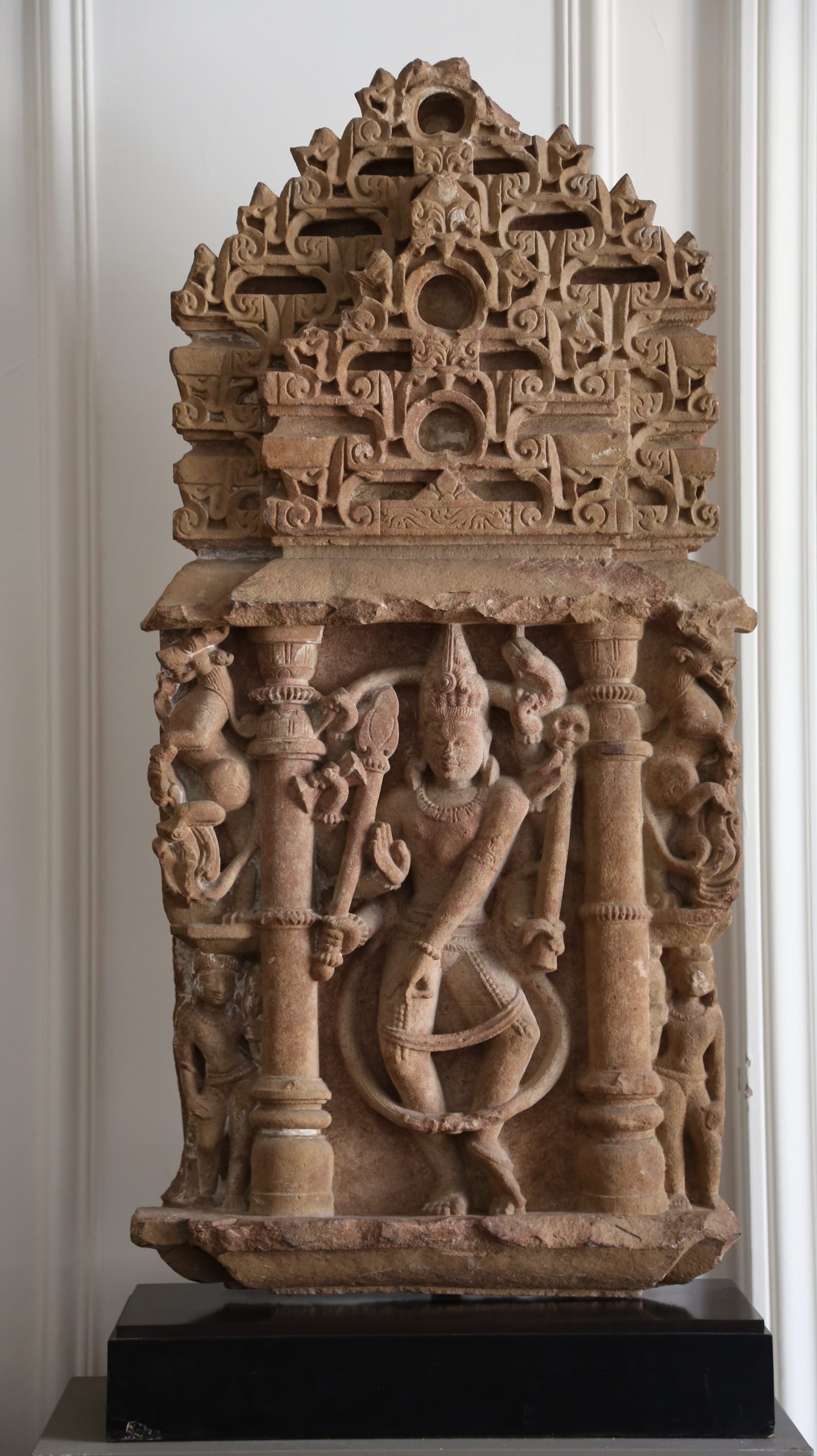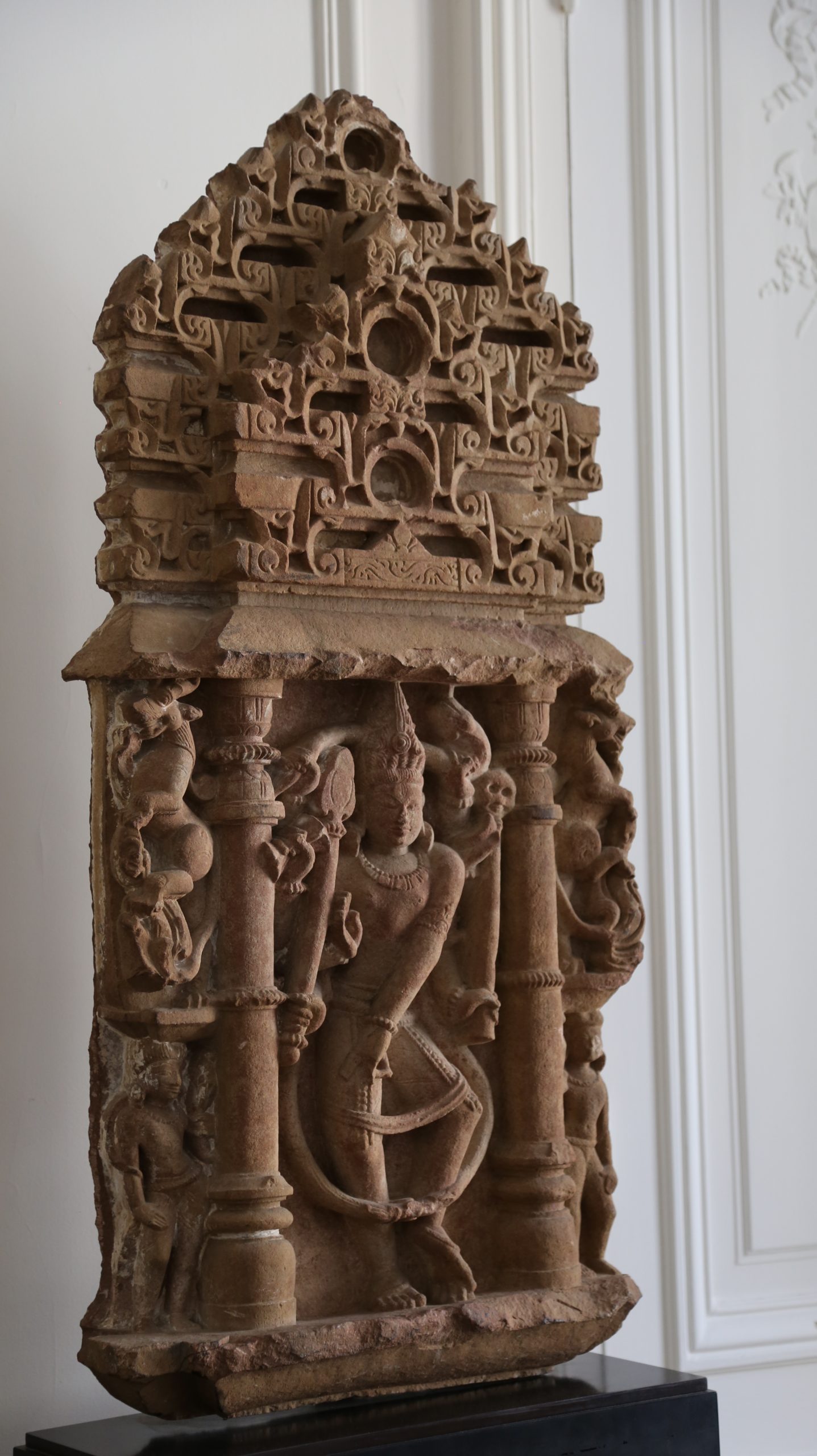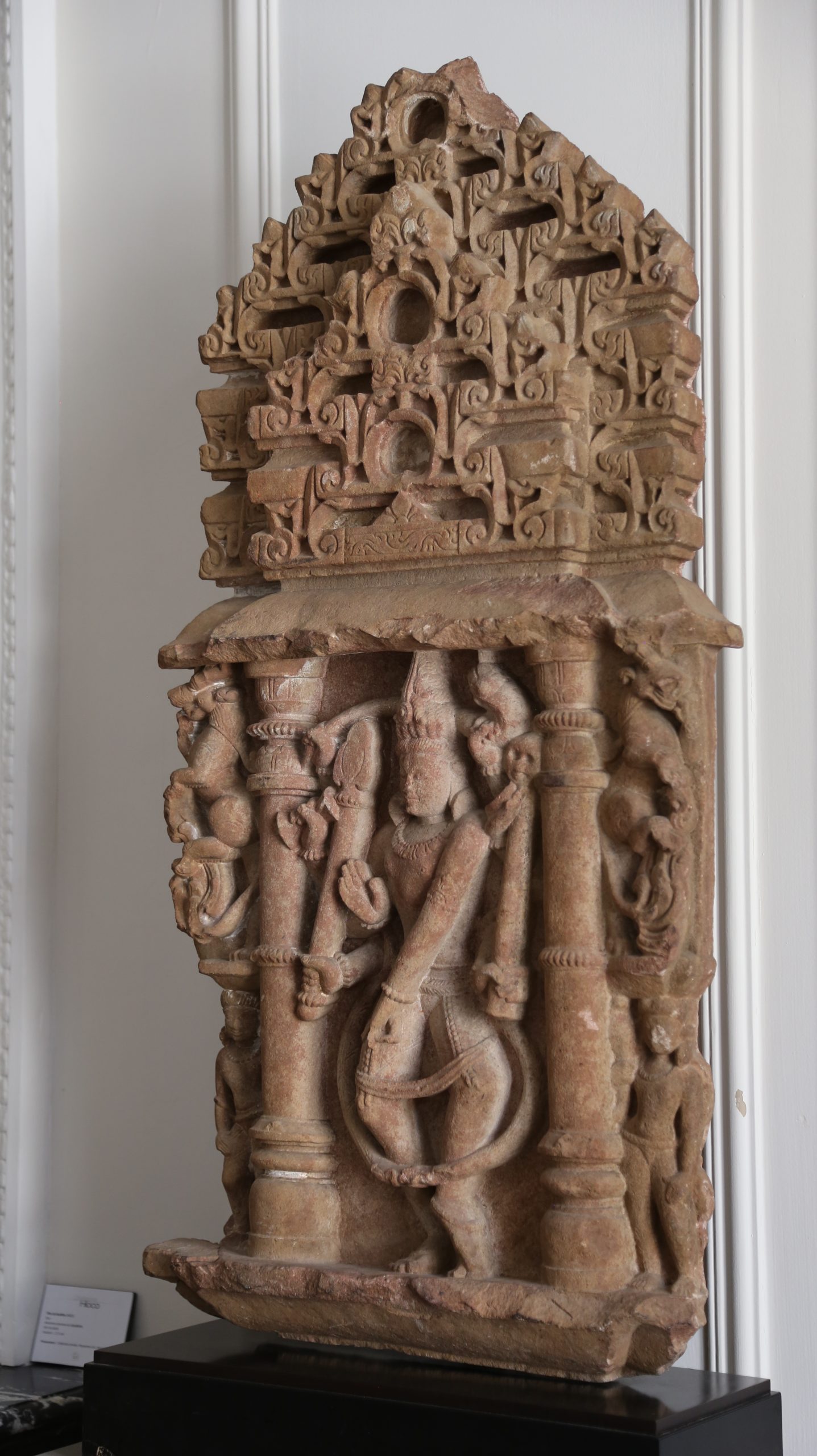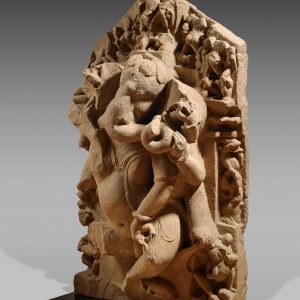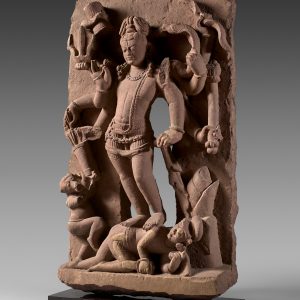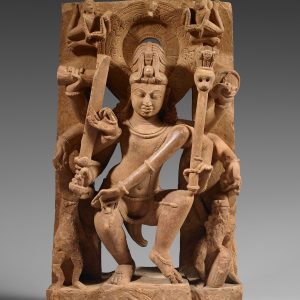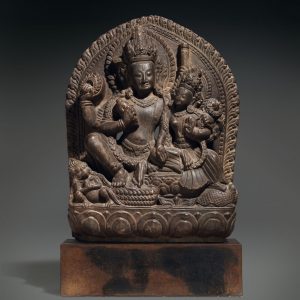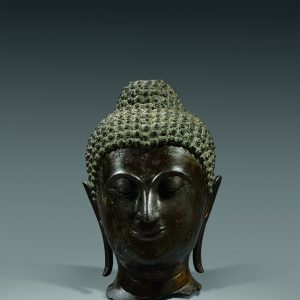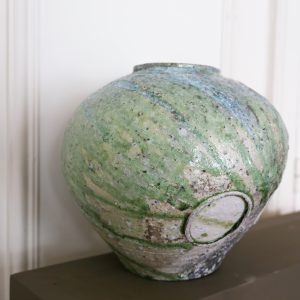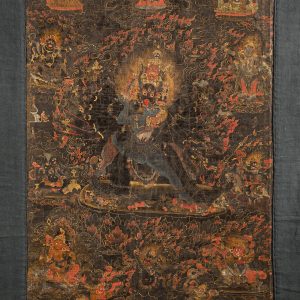The Hindu god Śiva
Sandstone
Northern India, Rājasthān or Madhya Pradesh
Circa 10th century
H. 104 cm or 41 in
Description
The god is performing a dance step, a reference to one of the god’s seven cosmic dances (tāṇḍava). Here he is depicted in his first dance (kālikā tāṇḍava), symbolizing creation. In this form, Śiva has eight arms, two legs and no third eye on his forehead. With his bottom right hand, he is making the protective gesture (abhaya). The next two hands are holding the trident and the hourglass drum (ḍamaru). The top two brandish a serpent which, here, replaces the cord and the belt usually held in the right and left third hands. The bottom left hand falls in the gajahasta pose, evoking an elephant’s trunk. The second holds the scepter crowned with a skull (yamadaṇḍa). The third, almost not visible at the edge, might be holding the flaming cup.
The other dances represent respectively: the preservation of the beings who live in the shadows, the conservation of the beings who live in spiritual bliss, death, the purification of the incarnate beings, the release of the souls, and finally the last summarizes the god’s five activities. For each of these forms the number of arms, the nature of the attributes and the movement of the legs vary. But in all, the god is holding the ḍamaru.
The sides of the niche give the illusion of a wooden construction. It is easy to spot the earthen jars with columns on the sides to protect them from humidity and wood-eating insects. Two attendants surround the god, one holding a lotus blossom and the other a fly-swatter.
The niche, undoubtedly removed from the outer wall of a temple, is crowned by a sort of tympanum made up of Indian arcs laid out in a fishnet pattern. This purely decorative motif was the final evolution in the monumental openings made in the facades of the great halls built in the Mahārāṣṭra cliffs of northeast Deccan as of the 2nd century B.C.E. and copied directly from actual wooden structures. After a lengthy evolution, this theme, having become a simple motif, was combined to decorate the facades of shikhara temples, crowned with curving towers characteristic of the Nagara style found widely in northern India as of the 8th century. This type of ornamentation was very popular in Rājasthān and Madhya Pradesh, parts of the Gurjara-Pratihāra Empire from the mid-7th to the 11th century.
The style of the characters fits well into the vast production of this empire, yet its specific origin cannot be ascertained.
Provenance: Private collection, Belgium, acquired 22 january 1969, then Claude de Marteau collection.
Art Loss Register Certificate, ref. S00106969.
- Amina Okada, Sculptures indiennes du Musée Guimet, p. 189-191.
- Pratapaditya Pal, Indian Sculpture, Los Angeles County Museum of Art, p. 288-289.

